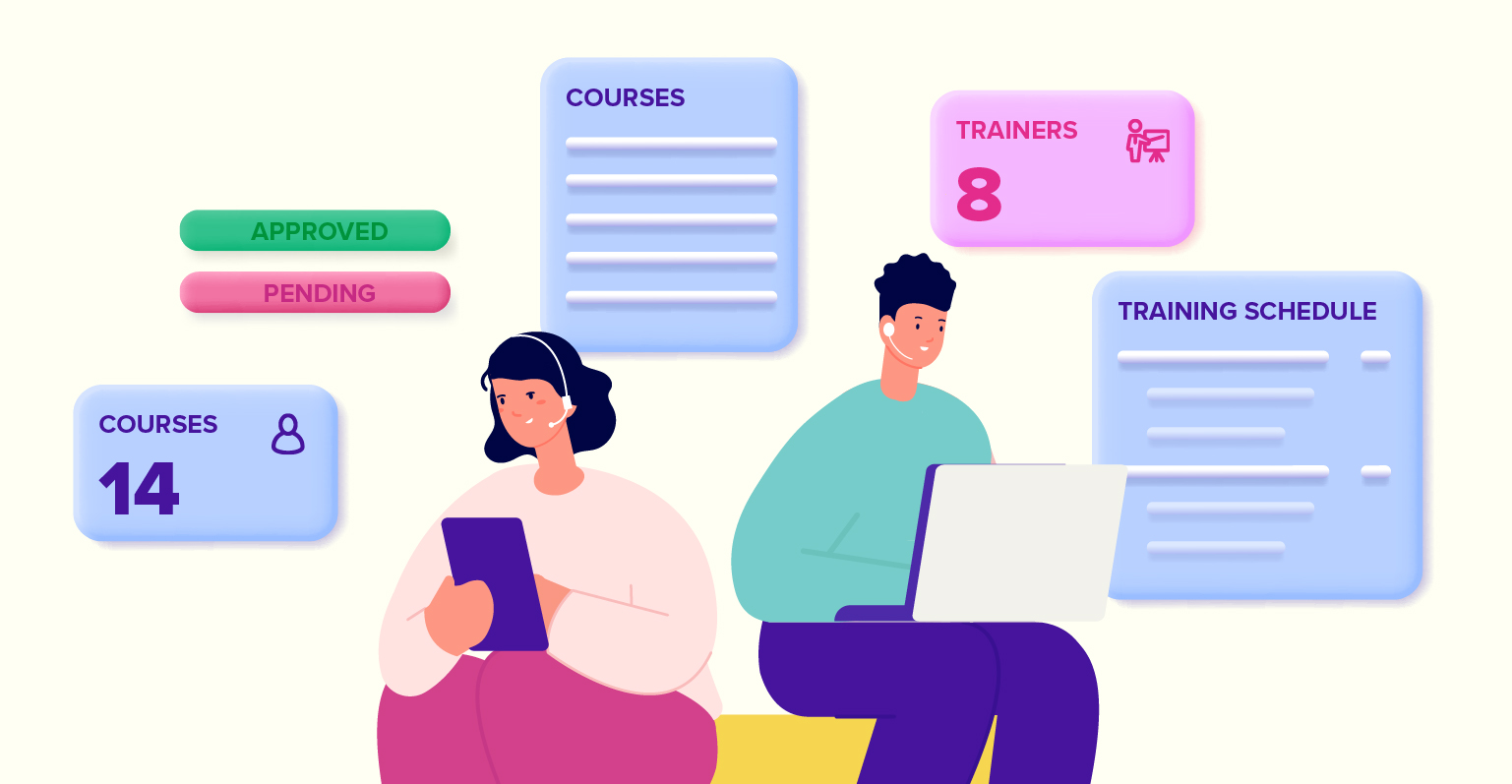Training Management System: An Introduction

Today, more than half of training providers have already utilised a training management software to help them handle the administrative parts of training, such as course booking, resource management, finance, and sales management. But what exactly is a training management system?
Whether you’re seeking for a new training management system or simply just want to learn more about it, this article will help you discover how integrating one into your overall work process can help transform your training operations.
What is a Training Management System?
Most training organisations provide good instructional resources and high-quality learning experiences, but fail to manage the business side of the organisation. Keeping up with various administrative tasks that come with running a training company can be difficult, leaving little time to promote and develop your service.
Leveraging your company with a training management system (TMS) centralises all of your course administration into just one platform, making it easier to manage and organise for your entire team. TMS is a software designed to manage and improve your organisation’s training operations. It is built to handle all back-office responsibilities that come with hosting training sessions, such as online course registrations, resource scheduling, billing, and collection so that your training processes become more efficient. Instead of working in various locations, everything is right where you need it, and you don’t have to waste time looking for the important data you need.

Who Uses a Training Management System?
Training organisations of all sizes can benefit from a TMS. With the right training management software, you can quickly organise, allocate, and schedule training through paths, groupings, and requirements. This not only saves time for your administrators and trainers, but also simplifies and speeds up the training process for your learners. Here are some examples of groups who use a TMS for their training management:
• Commercial training providers
For commercial training providers, they use TMS to basically sell more training. Using sales and marketing tools within the system enables them to promote courses online, offer online bookings, and manage finances to effectively handle the sales cycle.
• Universities and Colleges
With the use of a TMS, higher education departments can efficiently handle registrations, course payment, and enrolment, making it easier to manage and track resources, class schedules, and finances.
• Internal training teams
A training management tool enables managers to schedule, track, and assess their training programme for maximum success. It also allows them to organise logistics and resources, and handle recurring training tasks while creating a better experience for the people who matter the most— their employees.

Do you need a Training Management System?
Are there any training opportunities at your company? If so, you’re part of the target market for training management software! A TMS can offer you all of the functionality you need to stay ahead of the competition. It also has a significant impact on training providers who are dealing with the following issues:
1. If your company uses a variety of different platforms to manage training operations…
As a training business, how many systems do you rely on? Five? Ten? Even more? Most training companies are still using disparate systems to manage their overall business functions. This decentralised strategy is not only inconvenient for managers, but it also costs businesses a lot of headaches and, of course, money!
This is where training management software comes in! It serves as the central data repository where training administrators may quickly access comprehensive and up-to-date information. Manual processes, such as sending course reminders and generating enrolment data can be automated as information becomes more digitised. TMS not only reduces administrative workload and human error, but also helps training providers to have more time and resources to focus on their business.
2. If your customers are receiving inconsistent service…
Forgetting to respond, giving inaccurate information, and having discombobulated processes are all sure-fire ways to irritate your customers! It’s damaging for your brand, and there’s a chance that unfavourable experiences and criticisms will spread to other prospects you’re after.
Most TMS contain a built-in customer relationship management (CRM) tool that manages all important information, including contact details, purchase history, feedback, and communication history. Not only will information from your website be automatically transferred to the system, but your team can also be able to manually enter information for potential leads they encounter. As a result, you’ll never have to worry about forgetting an email address for someone you’d like to follow up with because it’ll be stored in your system. Plus, it can help you stay connected with customers and improve profitability.
3. If you’re struggling to provide multiple payment options to your clients…
When was the last time your team reviewed your clients’ payment options? Given the amount of effort that goes into developing a successful customer experience, it’s surprising to find that when customers are ready to pay, some are denied because their preferred payment method isn’t available.
Thankfully, a training management software supports multiple payment gateway options. With the help of accounting and financial tools, it can automatically generate invoices, booking information, and credit notes. You can also track payments to ensure your customers pay on time! By providing a variety of payment alternatives, you can establish yourself as a forward-thinking company that prioritises the needs of its clients. As a result, your brand visibility and revenue may both improve.
A training management system can be an indispensable tool for training administrators and departments in charge of large-scale training initiatives. This platform can offer everything from training resource management to automation of tedious processes, making everyday tasks easier.
If your company hasn’t yet adopted a TMS, maybe now’s the time to consider it! At SSA Innovations, we offer various digital solutions to help your business move forward. Be it training resource management, automation of repetitive tasks, or training intelligence, our training management software can handle a wide range of training needs! We also have SSAVANT, our learning management system (LMS) that allows you to keep all of your training materials and courses in one place. So, email us, and our team will get in touch with you to discuss your needs!
Related Topics

The Value of Human Wisdom in AI-Driven Learning and Development
AI is leading the way in transforming education. However, it...

Digital vs. Customised Learning: What’s the Difference and Why it Matters
As organisations increasingly turn to online platforms to deliver learning...

e-Learning: How does AI Personalisation Work?
AI personalisation is changing the landscape of online learning. By...

FOBO: The Fear of Becoming Obsolete (Infographic)
Experiencing a sense of being left behind and finding it...

Discovering No-Code Development
Picture a scenario where you have a small clothing business...